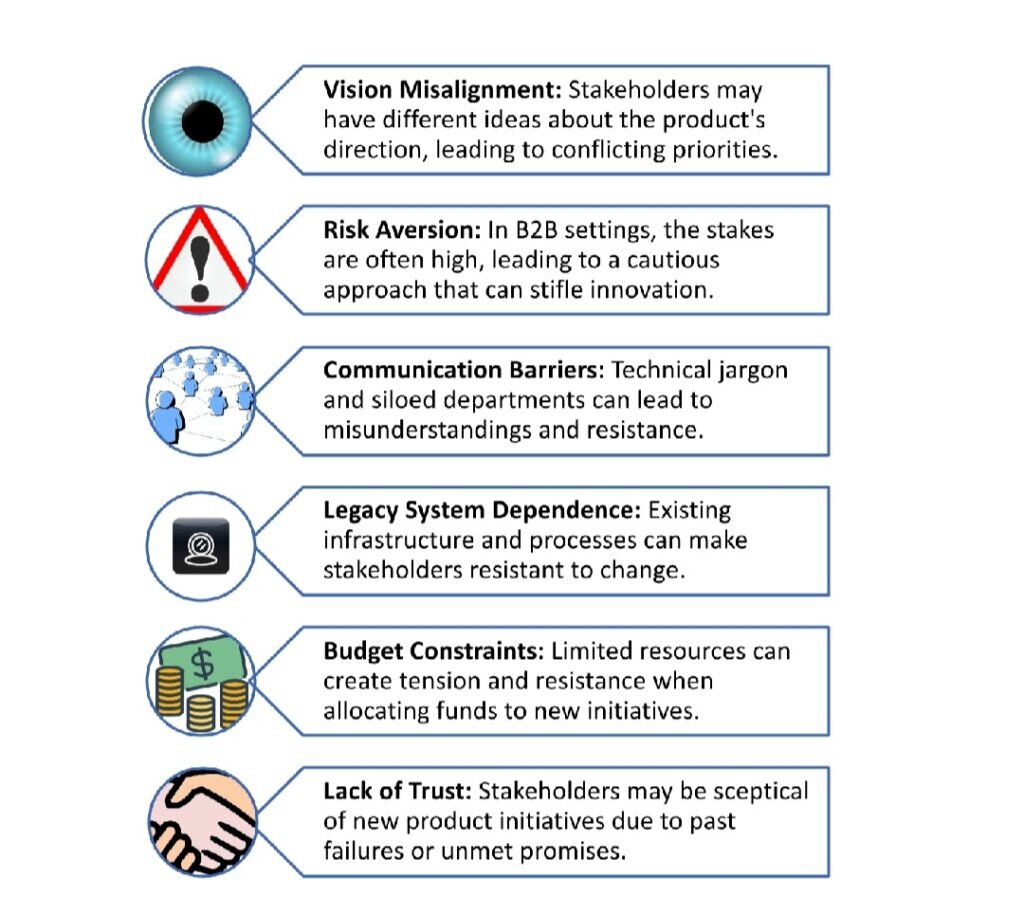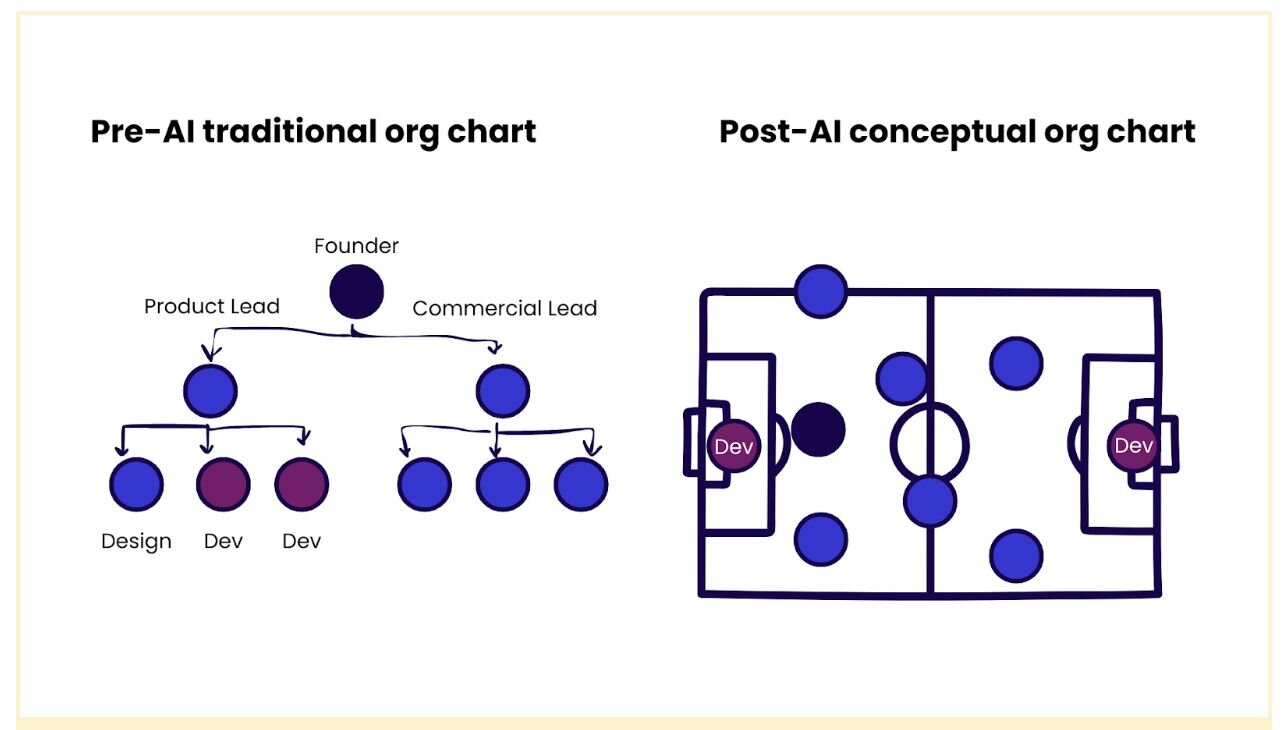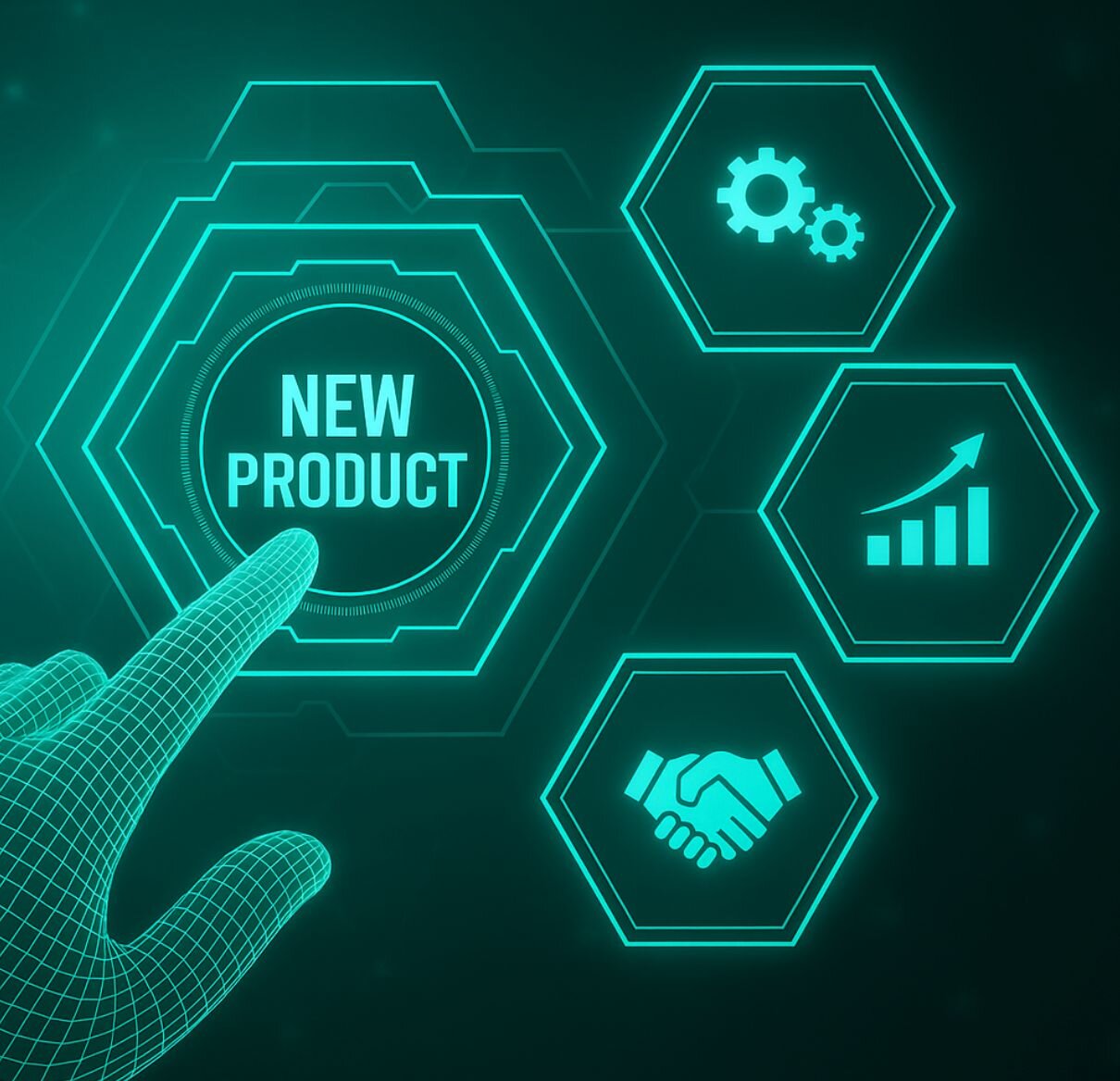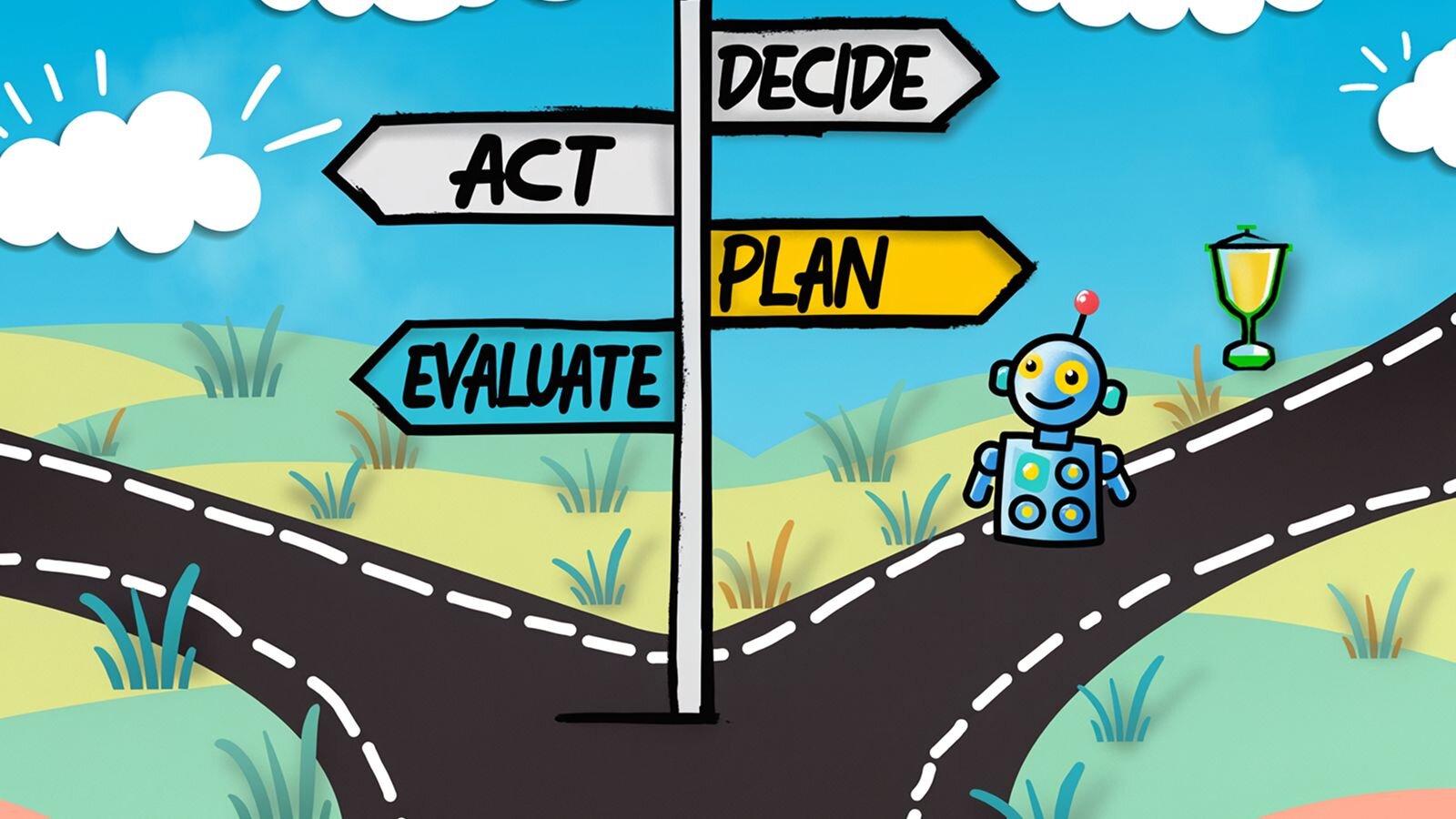Lately, I’ve been leading a B2B product team to deliver product features in an accelerated timeframe, to customers who neither understood how incremental product delivery works, or had experience working in an Agile environment. I learned it the hard way that in the complex world of B2B product management, resistance from stakeholders can often become a significant roadblock to delivery, innovation and documenting progress.
While reminiscing about the 30+ stakeholder interview sessions I conducted over a period of 3 months, I realized that everyone understood the assignment differently. The departmental needs were hugely different from the overall objective, and SME’s were just uncomfortable making decisions that would eventually affect 3000 business users (directly) and 20 million+ patients (indirectly).
Key themes stemming out of stakeholder resistance were:
- Vision misalignment
- Risk aversion
- Communication barriers
- Legacy system dependence
- Budget constraints
- Lack of trust
As a product manager, navigating these choppy waters required a unique blend of skills, strategies, perseverance, and an ability to not succumb under pressure.
Below, I will generalize, and we will explore the challenges faced in high-resistance environments. I will provide what worked for me and how you can implement it as an actionable method to overcome resistance, lead with confidence, and ensure successful product development.
Let’s start by rank-stacking the problem based on frequency and impact

Let’s Explore some metrics, the approach I took to overcome resistance, and what can work industry-wide.
Vision misalignment
According to statistica, organizations can lose up to 10% of their annual revenue due to product vision misalignments, some even going out of business; In the US alone, vision misalignment costs organization 1 trillion $ in lost value.
In my case, some clients requested highly specific features that, while valuable to them, didn't align with the product's core vision or scalability goals. Implementing these bespoke features into the main product would have created a fragmented user experience for other customers, while increasing long-term maintenance costs. This misalignment forced an internal decision to balance immediate customer needs against the need for a cohesive, scalable product that could serve our broader B2B customer base effectively.
Resolution approach
Implemented a collaborative vision alignment process using the OKR (Objectives and Key Results) framework.
Implementation
- Organized a series of vision setting workshops with key stakeholders, and allowed informed decision making across customer needs by helping address the problem through similar customer referencing.
- Used the OKR framework to define top-level objectives and measurable key results.
- Created a shared vision board accessible to all stakeholders.
What worked
- OKRs provided a clear, measurable way to align diverse stakeholder perspectives.
- Vision workshops fostered a sense of ownership among stakeholders and allowed the immediate stakeholders to move out of the myopic vision.
Improvement observed
- 40% reduction in conflicting feature requests.
Risk aversion
A study by McKinsey found that 67% of B2B companies struggle with risk aversion in product development. Slack, facing similar challenges, implemented a "freemium" model to reduce perceived risk for potential enterprise clients. This strategy led to a 30% increase in enterprise adoption within the first year and ultimately contributed to their $27.7 billion acquisition by Salesforce.
In my case, stakeholder risk aversion significantly hindered innovation. Stakeholders, unfamiliar with Agile methodologies, were hesitant to embrace new features or changes, fearing disruption to existing workflows. This resistance led to a steep decrease in the number of new features approved for development compared to peer average.
Resolution approach
Adopted a "Minimum Viable Product" (MVP) approach coupled with A/B testing, and used constant customer engagement to capture buy-in.
Implementation
- Broke down large initiatives into smaller, testable MVPs to follow functionality driven development.
- Implemented A/B testing for new features with a subset of users; Interchange users after each sprint.
- Established a "failure budget" to encourage calculated risk-taking.
What worked
- MVPs allowed for low-risk experimentation.
- The "failure budget" concept shifted the culture towards embracing smarter risks.
Improvement observed
- 50% increase in the number of new features tested per quarter.
Communication barriers
Communication is key to product management, a Project Management Institute study revealed that ineffective communication leads to project failure 56% of the time in B2B environments, It also suggests that most problems are people problem.
In my case, communication barriers were exacerbated by geographical dispersion and varying levels of technical expertise among stakeholders. This resulted in a 30% increase in project delays and re-intervention requests to avoid misunderstandings. To address the issue, I implemented a multi-faceted communication strategy. Through Omni-channel communication I created a glossary of terms accessible to all team members, used visual tools like mind maps and flowcharts to explain complex concepts, and implemented regular cross-functional "tech translation" sessions.
Resolution approach
I Implement a multi-faceted communication strategy using plain language and visual aids (Information Radiator); I also enabled tech translation sessions for business users.
Implementation
- Created a glossary of terms accessible to all team members.
- Used visual tools like mind maps and flowcharts to explain complex concepts.
- Implemented regular cross-functional "tech translation" sessions.
What worked
- The glossary became a valuable reference, reducing misunderstandings.
- "Tech translation" sessions broke down silos between departments.
Improvement observed
- 30% reduction in project meetings.
Legacy system dependence
Gartner reports that 90% of current applications across organizations will still be in use in 2025, generating technical debt. Many companies are modernizing their tech stack and hosting by moving to cloud native solutions.
Industrywide, 60% of development time is spent on maintaining outdated systems rather than innovating, in my case, this technical debt hindered the ability to meet modern customer needs while staying competitive.
Resolution approach
Developed a phased modernization strategy with clear ROI metrics.
Implementation
- Conducted a thorough audit of legacy systems and their dependencies.
- Created a heat map through hotspot analysis of system pain points and carved opportunities for potential improvements.
- Developed a phased migration plan with clear milestones and ROI projections.
What worked
- The heat map visualized the impact of legacy systems, gaining stakeholder buy-in.
- Phased approach reduced resistance by breaking changes into manageable steps.
Improvement observed
- 30% reduction in maintenance costs for legacy systems within the first 9 months.
Budget constraints
A Deloitte survey found that 55% of B2B companies cite budget constraints as a major obstacle to product innovation.
In my case budget constraints threatened to derail key initiatives, with a 25% reduction in available resources compared to the previous year; The problem was intensified further due to global signs of recession and clients becoming cautious of their capital allocation.
Resolution approach
To navigate this challenge, I Implemented value and risk-based prioritization and lean budgeting techniques.
Implementation
- Adopted the WSJF (Weighted Shortest Job First) prioritization method.
- Implemented rolling-wave budgeting for more flexible resource allocation.
- Created a value vs. cost matrix for all proposed initiatives.
What worked
- WSJF helped objectively prioritize initiatives based on value and effort.
- Rolling-wave budgeting allowed for more agile resource allocation.
Improvement observed
- 20% increase in ROI on product development initiatives.
Lack of trust
A Harvard Business Review study found that employees in high-trust organizations are 50% more productive. A case in point is Patagonia, which built trust by implementing radical transparency, sharing financial and environmental impact data publicly, which drove the culture from within.
In my case, lack of trust between the product team and stakeholders resulted in a 40% increase in functionality revisions and a 25% decrease in quarterly CSAT. I quickly realised the indicators which pointed towards lack of transparency and non-implementation of customer feedback loops into the product development cycle.
Resolution approach
I implemented a transparency-first approach with regular trust-building exercises, Sprint retrospectives were run to focus on identifying solutions as opposed to sticking to the problem statements.
Implementation
- Created a public product roadmap with regular updates.
- Organized monthly "open house" sessions where stakeholders can freely discuss concerns.
- Developed a stakeholder feedback loop with clear action items and follow-ups.
- Implemented Sprint Retrospectives to focus on solutions first.
What worked
- The public roadmap improved stakeholder alignment and reduced surprises.
- "Open house" sessions provided a forum for addressing concerns proactively.
Improvement observed
- 50% increase in stakeholder trust metrics within six months.
Bonus nuggets
- Practice active listening: Often, resistance stems from unaddressed concerns. Make a conscious effort to truly understand stakeholder perspectives.
- Be transparent: Share both successes and challenges openly. This builds trust and encourages collaborative problem-solving.
- Leverage executive sponsorship: Secure support from top management to help overcome resistance at other levels of the organization.
- Stay agile: Be prepared to pivot your approach based on feedback and changing circumstances.
- Focus on value: Always tie product decisions back to customer value and business objectives to gain stakeholder buy-in.
Conclusion
Leading B2B product management in a high-resistance environment is undoubtedly challenging, but with the right strategies and mindset, it's entirely possible to turn sceptics into advocates. The first step is to embrace resistance as an opportunity to improve, and iteratively optimize one step at a time.







